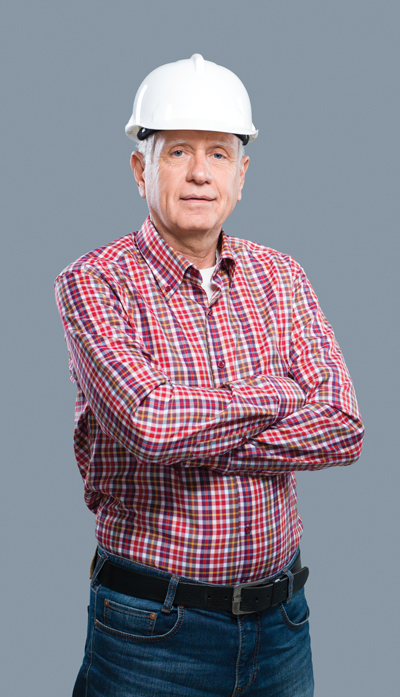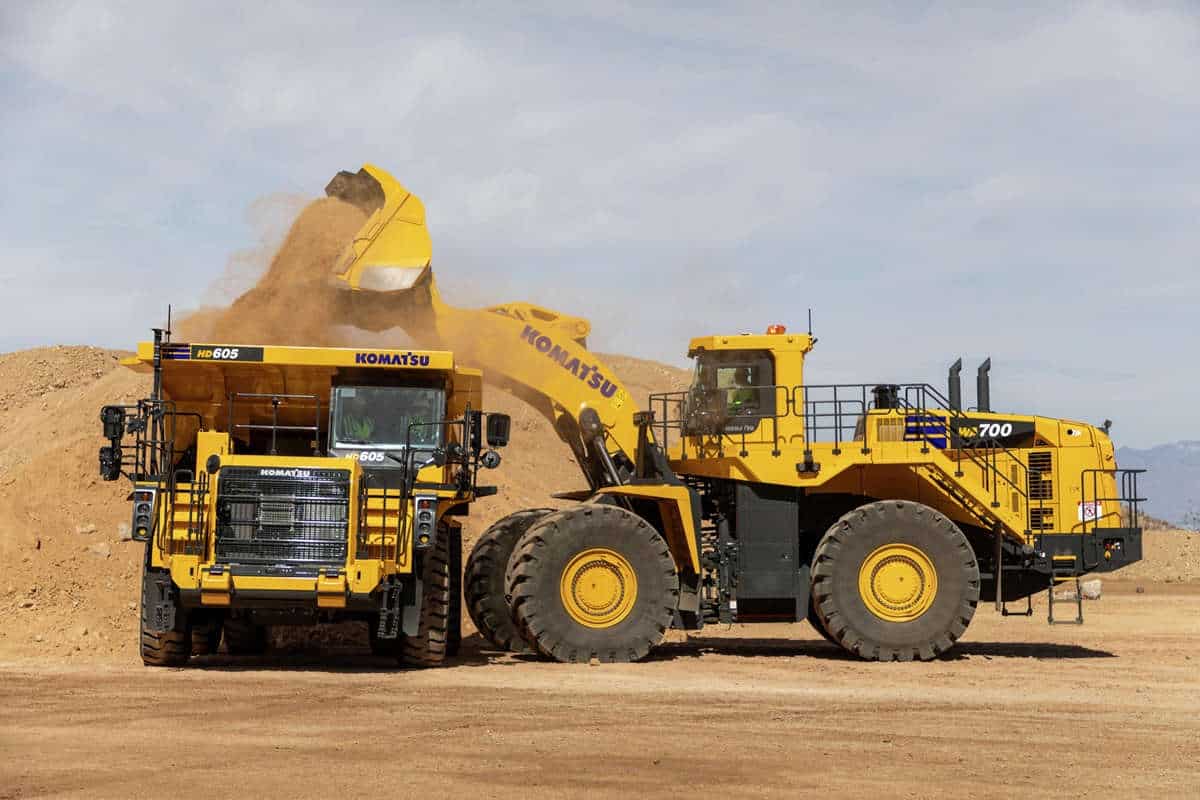Just a Number
 Aging is inevitable; we grow up, we get older and our bodies begin to wear. While that physical deterioration can be a nuisance, it doesn’t need to interrupt our everyday lives and ability to work.
Aging is inevitable; we grow up, we get older and our bodies begin to wear. While that physical deterioration can be a nuisance, it doesn’t need to interrupt our everyday lives and ability to work.
This is certainly true in the construction industry, where the average age of a worker is 40.4 years. And although that’s not “old” by any stretch, the rough and tumble nature of construction work can certainly take a toll on someone’s mind and body. However, with proper planning and understanding workers’ needs, a company can retain aging employees longer and reap the benefits of their expertise in the field.
“Everyone [particularly supervisors] needs to take a look at what aging really is and get past myths which unfortunately exist,” says Nellie Brown, CIH, Director of the Workplace Health and Safety Program at Cornell University. “That way, we can see what the concerns of aging are and what’s real and what’s not. From that, we can look at what needs to be done to proactively plan for the aging process and hold on to a skilled workforce longer.”
The Benefits of a Seasoned Workforce
Perhaps the most obvious benefit of having older workers is experience — they’ve worked for years and have developed their skills through plenty of practice. These include strategic problem solving, as well as the ability to communicate with peers and clients on the job.
“Experience brings about a lot of valuable qualities in workers,” says Brown. “Older employees tend to be a lot more flexible, especially in their judgment, because they recognize where the gray areas are and are not as hard and fast as younger people. Verbal and people skills are typically much better, thanks to experience and practice. When we talk about communication skills, it’s all about practice — you don’t have to be a natural at it. These skills enable people to interact with fellow employees and clients effectively. Overall, you’re building on so many different aspects of experience which is very important.”
With these advanced communication skills, comes a difference in how older workers respond to certain forms of communication. For example, older workers are less dependent on communication tools such as cell phones, so they’re able to complete tasks before feeling the urge to return a call. This can result in safer and more productive work out on the jobsite.
“Older people may be able to better pace themselves and do things better in stride, whereas younger people seem to be very glued to their electronics,” says Brown. “I often have complaints from employers about younger people having this electronic compulsion where if they get a call or a text, they’ve got to respond immediately. Employers go nuts over that because it interrupts the work and can be dangerous. I’ve had to speak on distracted driving and not just on the road, but also farm equipment, because the electronic compulsion seems to be so profound.”
 Debunking Aging Myths
Debunking Aging Myths
One of the first misconceptions people may have about older workers is that they’re not interested in learning new things. However, Brown points out that the saying, “You can’t teach an old dog new tricks” is scientifically disproven.
“Despite what people may think, older workers tend to be interested in learning new things,” she says. “They learn things more easily because they build on their previous knowledge base. We have tremendous memory structures in the brain and, as we age, we build on those. When you’re very young, you have to create these structures from scratch, and when you’re older you simply add to them.”
With that in mind, training can be effective in an older workforce as long as the proper methods are used. For example, Brown mentions that older people often rely on hands-on training where they can work out a problem in person rather than through a computer screen. This is particularly true with learning new technology or using technology for training purposes.
“Younger people have grown up with technology — they expect it, they assume it and adapting to it is very easy,” says Brown. “However with older people, some have adapted to technology [cell phones, computers] very quickly and you have some people who need to ease into it. Where I have found some resistance to technology has been online training; you get a mixed bag with that. Some people respond very well and some don’t. They need hands-on opportunities where they can do things live and be able to talk to other people while they work through the process.”
To be successful in training or the adaptation of technology, Brown suggests taking it slow and make sure the instructor understands that everyone learns at a different pace and in their own way.
“Ease into technology and be sensitive to any resistance or obstacles,” she says. “Unfortunately, what happens often in our society is we tend to have people do technological training for whom technology is fun and they don’t understand the fact that some people have resistance to it. They may need hands-on practice or be eased into it.”
Mental capabilities are also important to note as older people are often thought to take longer when problem solving or reacting to certain situations. While some studies have shown these delays may be caused by the aging process, Brown notes that it goes back to a person having a larger memory database to consult before making final conclusions or decisions.
“It may take someone who’s older longer to solve a problem, because they are consulting a larger memory database in the brain and you want that,” she says. “If you look at the speed of information processing, a lot of the things that happen don’t seem to be reflective as well in workplaces. In workplaces, there are reminders all around you of what you’re doing and habits take over. There’s so much going on that stimulates a person to remind them of what they need to do so it’s not clear if the studies reflect real behavior in the workplace. For example, as we age, we may become slower at discriminating real words from non-words in tests of cognitive decline, but age makes us more accurate at this task — experience makes us better.”
Addressing the Aging Process
As people age, so do their bodies. To combat these physical issues head on, it’s important to look at what can be done to minimize the risk of injury and make the work process easier on someone’s body.
“The physical effects of aging are very real,” says Brown. “No matter how much you work out and try to maintain your physical body, there will be declines in muscle mass and bone strength. That’s why attention to the ergonomic side of things is so important.”
While manufacturers are constantly improving ergonomics in their equipment, companies can make tasks such as lifting and carrying easier for their crews. This puts less stress on workers’ bodies which is great no matter how young or old they are.
Noise is another concern for construction crews, especially those with aging workers. Older people are more prone to hearing damage since they have less residual hearing. Therefore, it’s important for them to preserve what hasn’t been damaged.
“Noise is a hazard that doesn’t really give warning,” says Brown. “It’s not like a cut where you feel something right away and know some sort of damage is happening. With noise, you don’t have that. You don’t have any real sensory notifications that you’re doing inner ear damage. People seem to think that nothing’s happening to them until they’re measured later and discover the damage.”
To address this, companies should encourage the use of PPE and monitor the activity of their employees. Brown also recommends giving baseline hearing tests to new, younger employees to gauge where their hearing levels are prior to beginning work.
“Young people have a tendency to put loud music right in their ears, so the result is that you’ll often hire somebody who is in their 20s and they have the hearing capabilities of someone in their 50s,” she says. “They’ve already done a lot of damage and didn’t even know they were doing it. You can do a lot proactively to get people understanding what the issues really are and do a lot to encourage wearing PPE.”
Vision is another physical characteristic that often taints with aging. If work is needed to be performed at night or in areas with varying shades of light, consider how much lighting is needed, especially for older people as they may have difficulties adjusting.
Working in heat and cold is always a concern in construction and being outdoors. As people age, special attention should be paid. In cold weather, workers should be adequately dressed and insulated. In situations of heat, it’s vital that people stay well hydrated.
“As people age, you’re more likely to see heart and kidney problems and those are going to affect people’s capacity and their water balance issues,” says Brown. “They may need extra hydration or extra breaks. When it’s cold, make sure breaks are given so people can warm up — that’s important at any age. There’s no real OSHA regulation for heat and cold, so it’s up to management to take the initiative and find other resources for help.”
Aside from these considerations, Brown mentions that overall company policies may need to be tweaked to accommodate aging workers. These include the possibility of shorter work days to ensure employees get plenty of rest so their bodies can restore themselves or time throughout the work day to address any individual health concerns.
“There typically needs to be a little more flexibility in someone’s hours as they age, whether it’s to take some medication or even test their blood sugar if they’re diabetic,” she says. “Flexibility in self-care is very helpful and we’re just going to see more of that. There’s a rise in diabetes and heart conditions, especially in the United States, so it’s beneficial to be proactive in your policies.”
Good employees are a company’s most valuable asset. And although aging — and its discomforts — are inevitable, it is possible to retain those workers who have remained loyal throughout the years. With a healthy balance of proactive planning and understanding, older workers can continue to thrive in the workforce and offer their experience and skills to clients and future employees.
“People want to be respected for their capacities,” says Brown. “Older employees offer years of experience, familiarity with clients and skills that are only developed over years of practice. If you’re planning for turnover because these people will eventually retire, you need to capture their knowledge while you can by having them train the next generation of people that come in.”
Pam Kleineke is Associate Editor of Utility Contractor.




